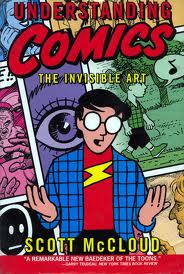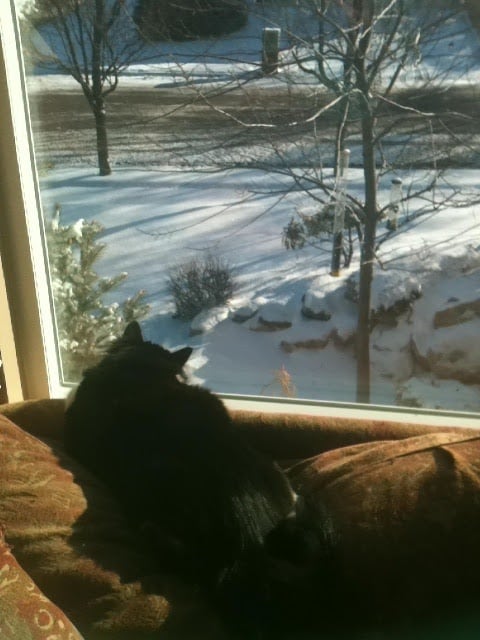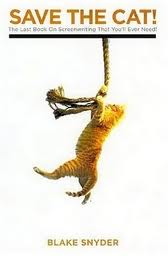People often say that if you want to write in a particular genre, read 100 books in that genre, and I really like that advice. But I also think there are advantages to breaking free from your genre and learning what another has to offer.
Inspiration Needed!
So I’ve been a bad blogger and my WIP would tell you that I’ve been ignoring it too. But this just gave me the kick in the pants I needed. Hope you find it inspiring too!
Lessons Learned From Illustrators
Last weekend, as SCBWI Regional Advisor, I attended our illustrator conference. The tips on lighting and body proportions did’t really apply to writing, although I suppose if I tried, I could work out a complicated metaphor… But I won’t. Here’s what struck me:
Midway through her talk, Sherry Meidell said, “Deadlines and time constraints can stifle creativity. Relearn how to play like a child. You have to daydream–take the time to sit and think. Visualize, look at your sketches, and daydream some more.” She advised us to go for a walk or a run, letting our stories play through our heads, as we ask if we’ve approached the illustration from the best angle.
Stories need to be told through the right angles too. Are we putting our characters in the best situations to move the story forward? Could we find a more interesting setting for this scene? Would our characters really do that–or is it merely a quick way to move the story along (and maybe avoid working through a tricky scene)?
As writers, we value butt-in-chair time, often racing through scenes to meet daily word count goals. As a NaNoWriMo fan, I’m guilty of stacking up word count without taking time to pause. Go on that walk. Stare out the window with my cat. Think.
I know that my writing could benefit from taking the time to daydream some more. So move over Minnie, let’s hang out on the sofa & think through my plot together… Okay, I know you’re only thinking about snacking on birds.
Setting Aside a Work-in-Progress
I’ve decided to do something I’ve never done in my writing life. I’m setting aside my WIP to start something new. Why?
I scrubbed my refrigerator instead of writing on Tuesday.
Yesterday I spent my writing time filling my notebook with poorly-written poems.
Characters sparked by reading a newspaper article a few weeks ago won’t stop chattering at me.
I’ve been trying too hard to write a book with a BIG GIANT SKY HIGH concept. And it’s just not me.
Part of me feels like a quitter, putting aside something that I thoroughly researched & outlined with the fast-paced precision of the 4th sequel in an action movie franchise. I pounded out 50,000 words during NaNoWriMo. But I have to acknowledge that the story is not working. And I’m not working. Even my family is growing suspicious about the cleanliness of the house. Matched up socks? What?!?!?!
Maybe the marketplace wants novels that can be decorated with dark, doom and gloom covers with pessimistic views of the future. Someone else can write those books. I’ve got to stay true to myself & tell this new story about real people with real problems, not that having vampires in my backyard wouldn’t be a problem…
I’m excited!
Gifts for Writers
Next week my critique group is having our annual holiday breakfast. We always exchange small writerly gifts. And I have no idea what to do this year. Some of my favorite writerly gifts that I’ve received are:
A framed ornament of my first ever book cover. Both my critique partner & I wrote stories that appeared in Blooming Tree Press’ Summer Shorts anthology. I love seeing this on my tree & remembering how hard I’ve worked at writing for all these years.
A tote bag for all my critique group needs: notebooks, pens, books, and manuscript pages. And it’s true: if you’re interesting, in any good or bad way, I will put you in my novels! (That means YOU impressively grumpy woman at post office yesterday.)
I place all sorts of knick knacks on my writing desk, mostly so I can play with them when I get stuck. Or haven’t quite started yet… I was thrilled to receive this little framed message reminding me simply to WRITE. I loved that the message was composed in kitchen utensils because I also enjoy cooking.
The students at Two Rivers High School, where I’ve been teaching a class this fall, gave me this cute little journal. Now I always love a cute diary, whining, I mean writing, my way through several volumes each year. But this one is extra special because each student wrote a short message to me. I love peeking at the messages–especially on bad days!
What are you favorite things to give to writer friends or to receive from writing & reading friends?
(I need some ideas to borrow!)
The Outline Advantage
My task this week: plan and plot my new WIP. I know, I know, outlining is not cool, not artistic, it hampers inspiration… Tony Hillerman says, “Usually the book is finished long before the outline is. Go with the flow. Sometimes plots don’t make sense, but it avoids that awful problem of outlining.” Anne Lamott (Bird By Bird) is against outlining. So is Stephen King (On Writing).
Writing A Pitch
Today my goal is to create a pitch for my next YA novel idea–something so intriguing that people will say, “I’ve got to read that. Write fast!”
I’ve been researching my idea for months, reading like crazy, thinking like crazy, watching YouTube videos, picking up random bits on NPR, steering dinner party conversations in unusual directions… My brain is STUFFED with information. But now I have to explain it to people. Um…
I’m a rambling mess!
Lucky for me, I discovered Save The Cat by Blake Snyder. It’s a book about screenwriting, but who better to teach me how to pitch than a Hollywood movie guy?
According to Snyder, a pitch answers this basic question: what is it?
(And it’s not Snakes On A Plane meets Three Men And A Baby–although who wouldn’t want to see that?!?!?)
A good pitch gives a clear sense of what the story promises to deliver (action, love, mystery). You want your audience to immediately form a compelling mental picture of your story. Better yet–you want to elicit an emotional response. A good pitch also includes a good title. Hunger Games? Yeah, I want to know what that’s about!
People also want to know who the story is about. Short and sweet, a good pitch characterizes both the main character and the antagonist. Is your character’s goal enthralling? The best way to hook someone with your pitch is to make sure that your character’s mission involves primal needs: survival, love, protection. Snyder asks: would a caveman understand your character’s needs?
Reducing all my research into a pitch only a few sentences long will probably be the hardest part to write. But I know that figuring out these basic elements will make the next 250 pages flow.
I’m excited and I want to write this story fast!
Still Collecting Characters…
One of my favorite neighborhood “characters” is a man who walks three little dogs every morning. With his dark shoulder-length hair, bushy beard, and old-fashioned coat, he looks like someone from another era. He should be wandering cobblestone streets in the mist, not dodging early morning sprinklers watering manicured lawns in a dry climate.
Seeing him, I sometimes wonder if there’s a time travel portal hidden among the white vinyl fences in my neighborhood…

But today I saw him walking his three little dogs, wearing shorts–Richard Simmons shorts. Oh, no! It turns out he’s a man from another era alright, but that time is 1980!
Well, at least he can still be a time-traveling nomad in my imagination.
Things I’ve Learned So Far
Other Kinds of Creativity
I’m just home from a jaunt through the Northwest. I brought books, notebooks, and my laptop, but I didn’t do any writing work. I simply appreciated other people’s creativity.
With sand:
Latte foam:
Salty soccer chants:
And lyrics. (Our marriage entered its last year as a teenager, so we took it to a My Morning Jacket concert.)
Watching others exercise their creativity always inspires me. So now I’m home with my notebook, adding characters like this cat who does fundraising for an animal shelter at Pike Place Market in Seattle.















